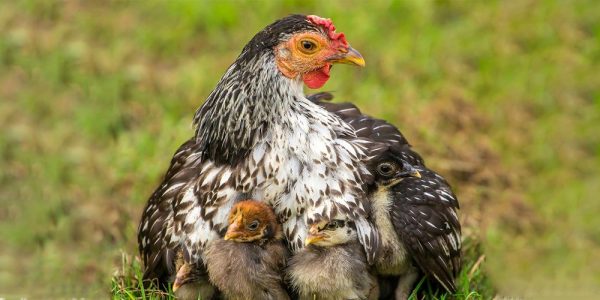“Chickens exist in stable social groups. They can recognize each other by their facial features. They have 24 distinct cries that communicate a wealth of information to one other, including separate alarm calls depending on whether a predator is travelling by land or sea. They are good at solving problems…
As a trick at conferences I sometimes list these attributes, without mentioning chickens, and people think I'm talking about monkeys.
Chickens certainly aren’t ‘bird brains’. But let’s not just take the word of a psychology professor on that one — let’s head straight to the source!
Meet Topsy and Bramble, two rescued battery hens who now not only enjoy the freedom to exercise their bodies but their minds too. These short videos show the remarkable cognitive capacity of chickens through image and colour recognition.
If you enjoyed these videos, please share them on your social channels, or send a link to your friends!
Here’s something else that may surprise you…
Did you know that there are more chickens in Australia than people?
For every single Australian, each year some 25 chickens are raised and killed for food in this country. Most of these birds live their lives hidden away in factory farms – either as broiler chickens (raised for their meat) or as laying hens in battery cages.
Life of confinement in a factory farm not only denies birds the ability to exercise their bodies — but also their minds.
You can make a world of difference to thinking, feeling chickens
Each time we choose animal-friendly food, we are voting for a world where animals, just like Topsy and Bramble, are seen for who they are, instead of what they produce.
Order your free Veg Starter Kit today for all the information you’ll need to start exploring the world of delicious and nutritious plant-rich food. If you’re ready to get cooking right away, you can browse 100+ recipes at VegKit.com.







